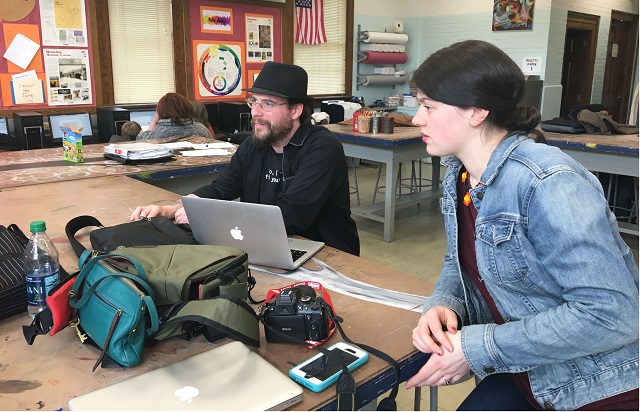
Manor Ink Editor-in-Chief Iris Fen Gillingham (right) and mentor Kris Neidecker take part in one of the paper’s editorial meetings in Livingston Manor, N.Y. Credit: Marc Filippino
It’s a rough moment for journalism. Newspapers across the country have been closing at an alarming rate. And many of the media outlets that remain are under attack for allegedly peddling fake news. It’s a problem that journalists alone cannot fix. Luckily for them, local libraries are pushing to restore people’s faith in the media — and sometimes even picking up the slack in places where news coverage is hard to come by. Innovation Hub producer Marc Filippino reports on how libraries are gradually changing the face of journalism.
Three Takeaways:
- Simmons College associate professor of library and information science Laura Saunders says that libraries are probably the best places to instill faith in the media because they have high public trust. In fact, a recent Pew Research Center poll found that most Americans feel that libraries can help them find reliable, trustworthy information.
- How will librarians accommodate different political viewpoints as they talk about a touchy subject like news literacy? Saunders says these new programs could lead to rethinking the role of the librarian, so they can help to guide the conversation.
- Some libraries are trying to fix news shortages in their community by starting their own publications. A few years ago, a library in Livingston Manor, New York created a monthly publication called Manor Ink with student reporters. Read more about Manor Ink here.
More Reading:
- Recently, Simmons College hosted a symposium where journalists and librarians from across the country brainstormed ways the two groups could help expand media literacy and media trust. See the report from that symposium here.
- Read the Chicago Sun-Times column explaining why readers should consult their librarians when they’re faced with fake news.
- The U.S. is seeing more areas that don’t have a local news source. These areas are known as news deserts, and, according to the Columbia Journalism Review, the worst news deserts can be found in southern California, parts of the Midwest, and Massachusetts.

